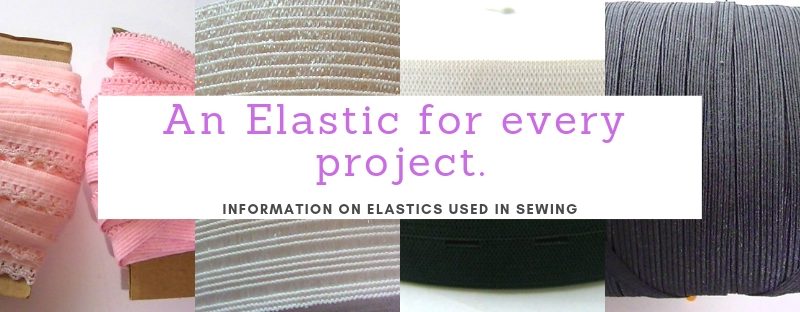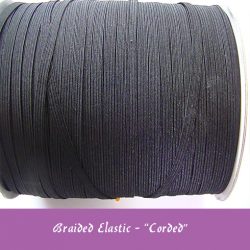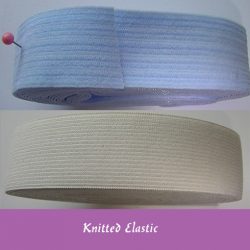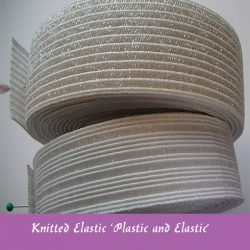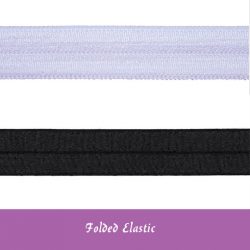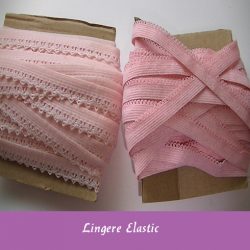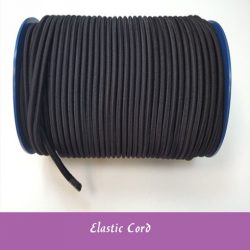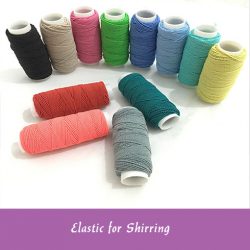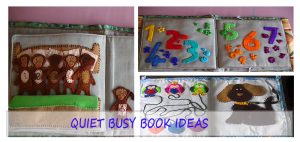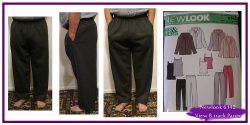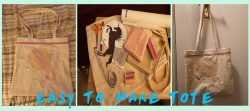Discovering Elastic – it’s guaranteed stretch
Discovering elastic for trousers has been a game changer. Imagine, a nice pair of easy fitting trousers with an elastic waist that has belt loops for a stylish belt. Yes, you got it no one knows or can see it has an elasticated waist. Comfy and easy to put on and keep up. I love going on Ebay and buying up sewing job lots. This has been my primary way of discovering elastics and learning about them.
Discovering elastic – what is it?
- Rubber or spandex cores are wrapped in a fiber such as polyester, nylon or cotton and then woven, knitted or braided to create the elastic. Hence all elastic is astonishing as it has unique properties.
- It varies in width and stretches due to its composition and makeup.
- There are different types of elastic. You should use the type of elastic specified in your pattern.
- Elastic is used in the waistband of pants, shorts, skirts and underwear. It is easy to pull elasticised trousers on and so becomes a good choice for young and old.
- Use an elastic as an easy sewing method for fitting and garment construction.
Discovering elastic problems:
- A common issue is the elastic curling and ending up fitting like a tourniquet. Using non-roll elastic and being sure you have enough ease in the elastic will solve that problem. Try anchor it on seams to prevent curling over during washing and wearing.
- Pulling elastic to much when sewing can result in not a lot of stretch.
- Sewing across the elastic threads causes them to break and the elastic becomes slack.
- Chemicals/ sea salt – swim suits can cause the elastic to deteriorate, wash out in fresh water.
Tips for Using Elastic
- Follow the pattern to discover the correct length and type of elastic to use. If none is specified go with the safest choice for your project i.e. non curl knit elastic for trousers.
- Pull your elastic a few times before making cutting it, this will help your elastic from becoming loose over time.
- Sew using a ball point needle, avoid breaking too many threads/cords.
- When sewing elastic to a fabric use a stretch stitch or zig-zag stitch to allow it to stretch with the elastic.
- Elastic ages over time with strands breaking, this is due to being stored in sunlight. Check that there are no bits on the elastic when you purchase it.
Identifying Different types of elastic
-
Braided elastic
Braided elastic is probably what most of us think of when picturing elastic. It has parallel cords going along the length of the elastic and it narrows when stretched. It looses its stretch when pierced with a needle, so it’s not the best choice for sewing through. Braided elastic is commonly used inside casings, such as the necklines shown in the dresses at the top of this post, or in sleeve hems. This elastic is counted in cords, so a narrow one may be 6 cords, slightly wider may be 8 cords.
2. Knit elastic
Knit elastic is soft against the skin. It is often used in underwear as it doesn’t narrow when stretched. You can sew through it with without weakening or distorting the elastic. Knit elastics are suitable for light to mid-weight fabrics. This elastic can be applied directly to the or can be threaded through a casing. Knit elastic is a great choice for pants or other applications where the elastic touches the body.
3. Discovering elastic – woven non curl
Woven elastic is a strong elastic and can be used on mid- to heavy-weight fabrics. Woven elastic has distinctive vertical and horizontal ribs and is often referred to as non-curl elastic. It makes a great choice for clothing, and outerwear. It won’t narrow when stretched and can be sewn through without weakening the elastic.
4. Fold over elastic
Fold-over elastic is used to finish edges on stretch fabrics. It is best used for underwear or sports wear, or even any clothing using knit fabrics. It is fluffy on one side and smooth or sometimes printed on the other so you can choose which side goes on the outside. It comes in different colours and patterns.
5. Lingerie elastic
Elastic for lingerie comes in a lot of different colours and textures and is designed for bras, undies and lingerie. This elastic can have a decorative edge, possibly scalloped or with a picot trim and elevates your creation from plain to pretty. Many of these elastics have a fluffy side and is soft against the skin.
6. Swim Elastic
Swimwear elastic should be labeled as safe for any elements you might face while swimming. This includes saltwater, chlorine, and sunscreen. Also, due to the high temperatures in hot tubs, be sure to look at the heat resistance of the elastic you are using. A lightweight, clear elastic can also be a great option for swimwear. This type of elastic can usually stretch three to four times its original length.
7. Cord Elastic
Cord elastic is made to be comfortable against skin and is commonly used in both jewellery making and in clothing that does not require as much stretch. The smaller size makes it a good option to use in baby clothes or when making clothing for dolls. Cord elastic is also commonly used to make button loops. It is recommended to hand wash and air dry.
Shirring elastic band
This is used for rushing, gathering or even a fake smocking effect. It goes into the bobbin of your sewing machine.
Use the internet to continue discovering elastic and how to sew it
“A clean house is a sign of a broken sewing machine”

